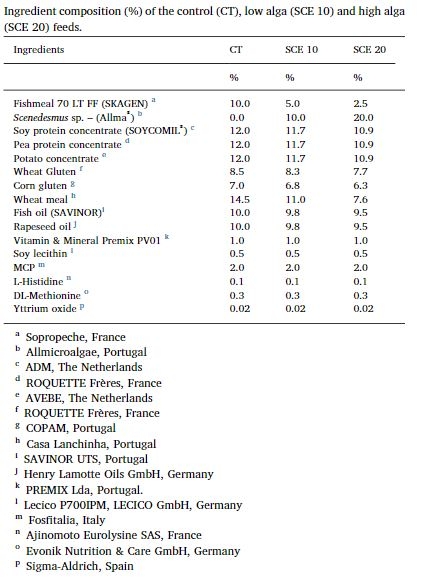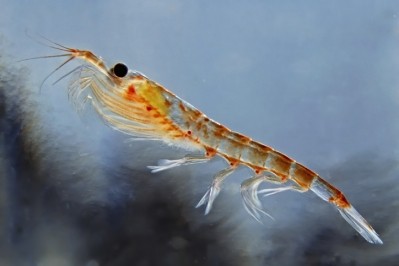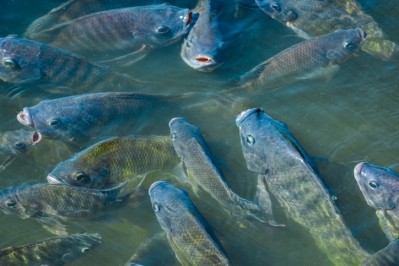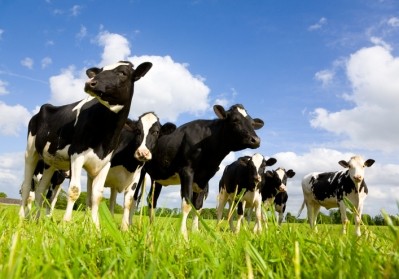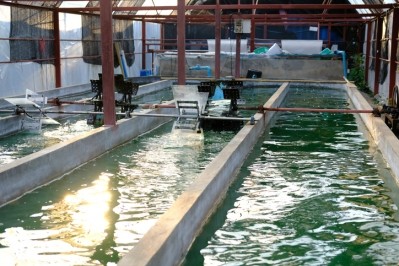Is microalgae effective in low fishmeal salmon diets?
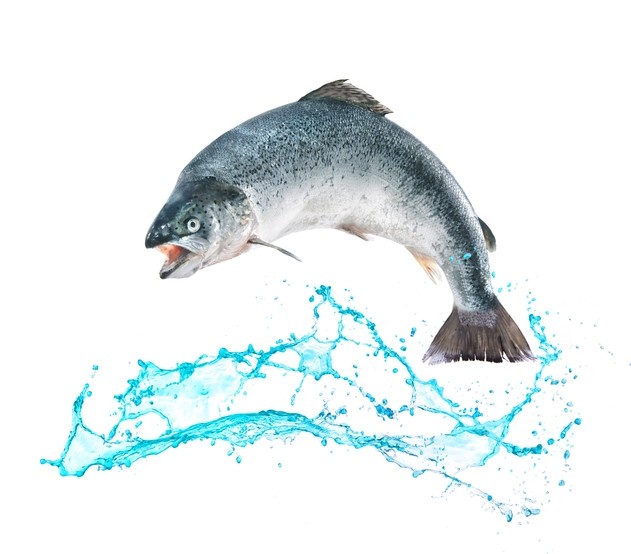
However, the inclusion of the microalga, particularly at 20% in low fishmeal diets, significantly reduced the digestibility, nutrient retention efficiency and feed conversion ratio in Atlantic salmon, said the team, with members hailing from the US, China and Norway.
Their study was published in Aquaculture.
Scenedesmus sp. at 10% in the feed improved the total n-3 and PUFA content in salmon.
Inclusion of the microalga up to 10% also did not significantly alter the physical quality of the feed, added the researchers.
Sustainable feed sources
More than 70% of global aquaculture production depends on formulated feeds or feed input, according to Tacon and Metian (2015). The authors stressed that the need for high quality ingredients will increase with the growth of the aquaculture sector, and that, therefore, future feed ingredients should be derived from sustainable and scalable sources.
Salmonid feeds can be formulated with high quality microalgae to maintain sustainability in the aquaculture industry. However, the suitability of different microalgae species as potential feed ingredients needs to be documented to enable ready acceptance by the farming industry, said the researchers.
Microalgae characteristics
The microalga, Scenedesmus sp, is a commercially available microalga, and it is grown in photobioreactors, said the team.
“The content of protein, lipid and carbohydrate in Scenedesmus obliqus dry matter is in the range 50–56%, 12–14% and 10–17%, respectively (Becker 2007). Palmitic acid (16:0), OA, LA and α-linolenic acid (18:3n-3, ALA) are the dominant fatty acids in Scenedesmus sp. (Tibbetts et al. 2015).”
The authors noted growth, feed utilization and nutrient digestibility of carnivorous fish fed microalgae depends on the microalgal type (Burr et al. 2011; Gong et al. 2018; Kiron et al. 2016; Vizcaíno et al. 2014) as well as inclusion level (Sørensen et al. 2016; Sørensen et al. 2017).
“Therefore, the effects of potential fishmeal replacements have to be evaluated by conducting feeding and digestibility trials with candidate microalgae.”
They said that Sørensen et al., 2016, Sørensen et al., 2017 have already shown the potential of other microalgae as fishmeal replacements in feeds for Atlantic salmon.
“The aim of the present study was to investigate the weight gain, growth rate, feed conversion ratio, nutrient retention, chemical composition of whole body and nutrient digestibility of Atlantic salmon fed low fishmeal diets in which the microalga Scenedesmus partly replaced fishmeal, a mix of plant protein concentrates and wheat.”
Methodology used in study
The study comprised three experimental diets: a control diet (CT) with a low level of fishmeal (10%) and relatively high levels of soy, pea and potato protein concentrates (1:1:1 blend), wheat gluten and corn gluten as major protein sources; a diet containing 10% Scenedesmus and 5% fishmeal (SCE 10); and a diet with 20% Scenedesmus and 2.5% fishmeal (SCE 20).
In order to balance the protein, lipid, carbohydrates and energy contents of the feeds, microalgae incorporation level was gradually increased at the expense of fishmeal, together with some minor changes in the levels of the various plant protein sources and a pronounced reduction of wheat meal.
In all diets, the major lipid source was a blend of fish oil and rapeseed oil (1:1). All diets were supplemented with crystalline amino acids (L-histidine and DL-methionine) and inorganic phosphate, said the team.
In addition, the physical characteristics of feeds were investigated to assess the impact of the alga-incorporation on the quality of the feeds, they wrote.
Fish (initial average weight of 229 g), in six replicate tanks, were fed one of the experimental feeds for 65 days, added the authors.
The findings
The team said their results showed that fish fed SCE 20 had significantly lower weight gain, specific growth rate, thermal growth coefficient and feed conversion ratio than the CT group, which did not receive the microalga.
Furthermore, they saw that the condition factor and protein efficiency ratio of the microalgae-fed groups were lower than the CT group.
They noted that the hepatosomatic and viscerosomatic indices of the groups did not differ significantly. Ash and protein content of whole fish fed SCE 20 were significantly higher, but dry matter, lipid, and energy of this group were lower than either the CT or the SCE 10 group, they said.
Retention of lipid and energy of all groups differed significantly, while that of protein in the Scenedesmus-fed groups were significantly different compared to the CT group, added the researchers.
Compared to the CT feed, digestibility of dry matter, protein, and energy in the algal feeds were significantly reduced, they said.
The highest fat leakage observed for the feed devoid of the algae and the hardness of the SCE 20 feed points to the better physical stability of the algae-containing feeds, they found.
Higher contents of n-3 fatty acids and PUFAs were found in the whole body of fish fed SCE 10.
The authors said that the fishmeal inclusion level in the control feed of the present experiment was based on an earlier study in which Atlantic salmon grew from 137 g to approximately 400 g on feeds containing 10 or 30% fishmeal (Kousoulaki et al. 2009).
“Although the authors did not observe any differences in weight gain or feed utilization they emphasized the importance of the quality of the fishmeal when its inclusion level is low (Kousoulaki et al. 2009). Later studies with rainbow trout have shown that marine protein ingredients (krill products) can be incorporated at 5% level, but to avoid negative effects on growth and feed utilization the protein quality must be secured by supplementation of amino acids (Zhang et al. 2012).
“In the present experiment, we have seen a non-significant reduction in growth and a significant reduction in feed utilization in SCE 10 compared to the control group. Reducing fishmeal to 2.5% in combination with 20% of the microalga Scenedesmus sp. significantly compromised growth and feed utilization compared to fish fed the control feed.”
They concluded that Scenedesmus sp. can be incorporated in low fishmeal diets for Atlantic salmon, at inclusion levels below 10%.
However, they said novel, cost-effective methods for cell wall destruction may be essential for increasing the bioavailability of nutrients.
“The microalga used in the present study were centrifuged and spray-dried without any further processing. The cell walls of the alga were assumed to be more intact, in contrast to the oil-extracted microalgae biomass used in the studies of Kiron et al. (2016) and Sørensen et al. (2017). This could be one reason for the lower nutrient digestibility recorded in this study compared to our above-mentioned studies. Teuling et al. (2017) reported that 10 min bead milling of Scenedesmus, Chlorella and Nannochloropsis can disrupt 11–39% of the algal cell walls and significantly increase the soluble protein fraction of the algae, which in turn is likely to improve protein digestibility.
“Teuling et al. (2019) confirmed that there is a high correlation between nutrient digestibility and the accessibility of nutrients from the microalga Nannochloropsis gaditana by Nile tilapia. The authors also observed different effects on cell wall integrity and digestibility by using various pre-treatments. The difference in digestibility of the Desmodesmus sp. (Kiron et al. 2016) and N. oceania (Sørensen et al. 2017) and the Scenedesmus sp. in the present experiment could be attributed to the discrepancies in pretreatment-induced nutrient availability.”
The funding for the study was from the Strategic Research Funds of Nord University and partly from the US Department of Energy under the project Marine Algae Industrialization Consortium (MAGIC).
Source: Aquaculture
Title: Microalgae Scenedesmus sp. as a potential ingredient in low fishmeal diets for Atlantic salmon (Salmo salar L.)
DOI: 10.1016/j.aquaculture.2018.11.049
Authors: Gong, Y; Bandara, T; Huntley, M; Johnson, ZI; Dias, J; Dahle, D; Sørensen, M; Kiron, V
